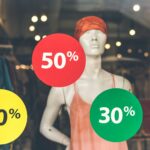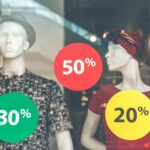Unlocking Business Opportunities in the Circular Fashion Industry: Models, Strategies, and Access Paths


Photo by Ben Issac on Unsplash
Introduction: The Rise of Circular Fashion as a Business Opportunity
The fashion industry is undergoing a transformative shift, moving away from linear ‘take-make-waste’ models toward circular approaches that prioritize sustainability, resource efficiency, and value retention. This evolution is not just a response to environmental concerns-it is also unlocking significant business opportunities. Recent estimates suggest that embracing circular practices could generate up to $560 billion in new economic value worldwide, while reducing waste and lowering the industry’s environmental footprint [5] [1] .
Understanding Circular Fashion: Core Principles and Market Drivers
Circular fashion is built upon designing, producing, and consuming clothing in a way that allows for continual reuse, repair, refurbishment, and recycling. This approach is gaining traction as consumers become more eco-conscious and demand transparency from brands [2] . Key drivers include:

Photo by Roman Kraft on Unsplash
- Resource Conservation: Circular business models reduce dependence on virgin materials, conserving water, energy, and raw inputs.
- Waste Reduction: Less clothing ends up in landfills, addressing a $460 billion global waste problem [1] .
- Changing Consumer Preferences: More shoppers are seeking sustainable, ethical products and supporting brands that align with these values.
Key Business Models in Circular Fashion
Companies exploring circular fashion can pursue several proven and emerging business models:
1. Clothing Rentals and Leasing
Rental platforms allow customers to lease garments for a period, providing access to high-quality fashion without the commitment of ownership. This model can generate recurring revenue and reduce overproduction. For example, brands like Rent the Runway have popularized clothing rentals, while others offer subscription services for everyday wear. To get started, consider researching established rental platforms and exploring partnership or technology integration opportunities.
2. Resale and Secondhand Marketplaces
The global resale market is expected to nearly double by 2027, reaching $350 billion [1] . Entrepreneurs can launch digital thrift stores, consignment services, or facilitate peer-to-peer exchanges. Companies such as thredUP and The RealReal have set examples with scalable online operations. To enter this space, you can build your own marketplace or collaborate with existing platforms, ensuring authentication and quality control for trust-building.
3. Product Take-Back and Trade-In Programs
Brands can incentivize customers to return used items for store credit or discounts. Returned garments are refurbished, upcycled, or recycled into new products. Nudie Jeans, for instance, has a well-publicized take-back initiative. To implement this, start by designing a straightforward return process and communicate the benefits to your customers. Consider logistics partners for reverse supply chain management and explore textile recycling technologies.
4. Repair, Remanufacturing, and Upcycling Services
Offering repair and alteration services extends the life of garments, encouraging repeat business and customer loyalty [2] . Upcycling transforms old clothing into new, unique items-an approach popular with independent designers and boutique brands. To begin, build relationships with skilled tailors, seamstresses, or upcycling specialists, and promote these services as part of your brand’s value proposition.
5. Sustainable Material Innovation and Closed-Loop Production
Innovators are developing new textiles from recycled materials, agricultural waste, or biodegradable inputs. Startups like Circular Systems are converting food crop waste into fibers, while Loop Swim uses recycled ocean plastics for swimwear [3] . Collaborating with material innovators or investing in research can create unique offerings and support closed-loop manufacturing, where products are designed to be fully recyclable at end-of-life.
Case Studies: Circular Fashion Startups Leading the Way
Several startups exemplify the range of circular business opportunities:
- Loop Swim: Produces swimwear from recycled ocean plastics, offers a take-back program, and engages customers in ocean cleanup efforts.
- MUD Jeans: Pioneers denim leasing and recycling, allowing customers to return worn jeans for recycling into new pairs, reducing water and energy use.
- Circular Systems: Innovates with biofiber production from agricultural and textile waste, supplying major brands with sustainable materials.
To learn more about these companies and their approaches, visit their official websites or search for their case studies through reputable business publications or sustainability forums.
Strategic Steps to Access Circular Fashion Opportunities
Individuals and businesses interested in entering the circular fashion sector can follow these key steps:
- Market Research: Analyze local and global trends in resale, rental, and sustainable products. Identify gaps or underserved niches by reviewing industry reports from organizations such as the Ellen MacArthur Foundation or the World Business Council for Sustainable Development.
- Business Model Selection: Choose the model(s) that best fit your resources, expertise, and market opportunity. Consider hybrid approaches (e.g., combining resale and repair services).
- Build Partnerships: Collaborate with recycling firms, logistics providers, or technology platforms. Participating in industry initiatives such as the CTI Fashion Initiative can help establish best practices and gain access to standardized metrics for evaluating circularity [5] .
- Design for Circularity: Source materials that are durable, recyclable, or easily upcycled. Develop products and packaging with end-of-life considerations in mind.
- Engage Consumers: Educate and incentivize customers to participate in trade-in, repair, or recycling programs. Communicate your brand’s sustainability mission transparently.
- Monitor Performance: Use standardized frameworks like the Circular Transition Indicators (CTI) to assess your impact and refine your operations for greater efficiency and sustainability.
For step-by-step guides or industry contacts, consult business incubators focused on sustainability or reach out to local chambers of commerce for networking opportunities.
Potential Challenges and Solutions
Transitioning to circular business models can present challenges, such as:
- Supply Chain Complexity: Managing product returns, refurbishment, and recycling requires new logistics capabilities. Solution: Partner with specialized reverse logistics providers and leverage digital tracking tools.
- Consumer Awareness: Some markets may lack familiarity with circular concepts. Solution: Invest in education campaigns and offer clear incentives for participation.
- Economic Viability: Upfront investment in materials innovation or infrastructure may be significant. Solution: Seek grants, impact investors, or join industry collaborations to share costs and risks.
Alternative approaches include starting with small-scale pilots, testing models in select markets, or focusing on a single product category before expanding operations.
How to Get Started: Practical Access Pathways
If you want to explore business opportunities in circular fashion, here are actionable steps:
- Research leading organizations and initiatives, such as the Ellen MacArthur Foundation, to understand industry best practices and access reports on circularity.
- Contact established resale or rental platforms to explore partnership opportunities, or apply for vendor programs if you have inventory to offer.
- Attend industry events-such as the Global Fashion Summit or webinars by the World Business Council for Sustainable Development-to connect with potential collaborators.
- If you are a startup, consider joining sustainability-focused accelerators or incubators, which can provide mentorship, funding, and access to networks. Search for terms like “circular fashion accelerator” or “sustainable fashion incubator.”
- For technical guidance on recycling processes, reach out to academic institutions with textile innovation programs or contact local recycling agencies for pilot project support.
Remember, participation in the circular fashion economy can begin with a single initiative-whether launching a resale service, piloting a take-back program, or investing in sustainable materials. Over time, these actions can position your business as a leader in the responsible fashion movement and open doors to new revenue streams and loyal customers.
References
- [1] Infor (2024). Implementing circular fashion from cotton to consumer.
- [2] PSQR (2023). How Will Circular Fashion Create New Business Opportunities.
- [3] Causeartist (2025). 11 Circular Fashion Startups to Watch in 2025.
- [4] The Sustainable Fashion Forum (2025). What is Circular Fashion?
- [5] WBCSD (2023). New circular economy opportunity for fashion and textile companies.






